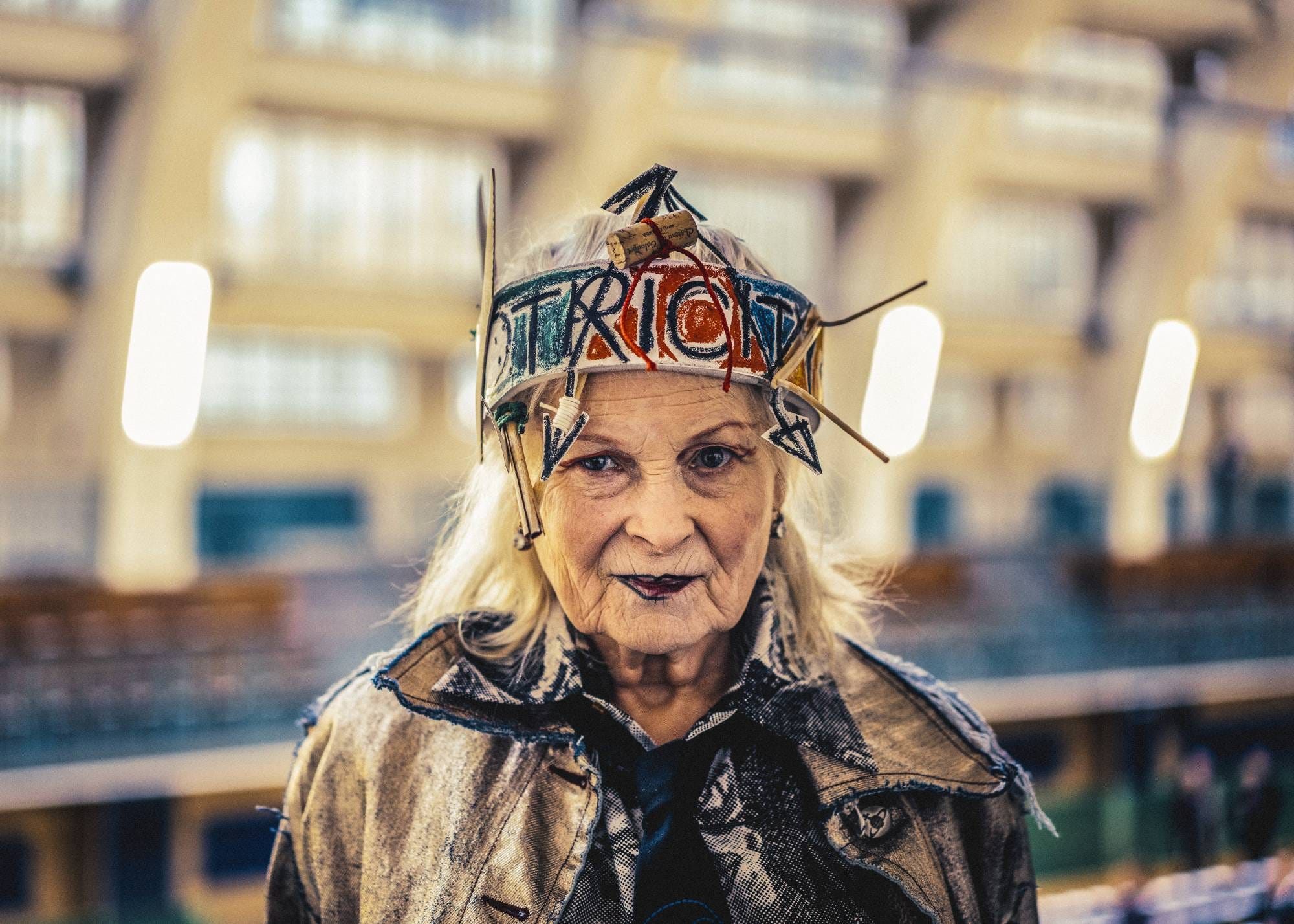
There was the punk scene, Malcolm McLaren, their racy clothes shop at 430 King’s Road that started out as Let it Rock, the creation of a look, and the gathering of the earth rumbling Sex Pistols. In fact, the late Dame Vivienne Westwood was already a proven stirrer, suggesting that she, not Sex Pistols frontman John Lydon, a.k.a Johnny Rotten, came up with the title for the barnstorming “Anarchy in the UK.” Boldly, she claimed that prior to McLaren and herself, there was no punk.
The Westwood look became ubiquitous with enthusiastic teens of the late 1970s, the use of studs, clothes replete with antisocial indignation, and the jarring, spiky hair to match. In the opinion of Dame Zandra Rhodes, “We’d had flower power… then suddenly you had this very-hard hitting punk.”
In her 2014 memoir, Viv Albertine of Slits fame offered a striking description of aspects of Westwood costumery: “mohair jumpers, knitted on big needles, so loosely that you can see all the way through them, T-shirts slashed and written on by hand, seams and labels on the outside, showing the construction of the piece.”
For Westwood, fashion was always meant to be a spear for change. But as she noted in her autobiography, one jointly aided by the pen of Ian Kelly, “When I turned around, on the barricades, there was no one there. That was how it felt. They were just pogoing. So I lost interest.” The kids, in other words, just wanted the gear without manifesting any grand idea; this was the confrontation of fashion without any enduring consequences.
Such a pattern would follow through the decades. The activist and designer were not always seen as one. Instead, Westwood was anointed as a cultural engenderer of daring haute couture rather than activist grenade thrower. But she made it clear that she was in fashion for only one reason: “to destroy the word ‘conformity’.” Far from being a mere designer of fashion, she “wished to confront the rotten status quo” via that medium.
The official website draws upon a busy life beyond design, speaking about activism over two decades in support of “hundreds of causes, NGOs, grassroot charities and campaigns, including Amnesty International, War Child and Liberty” in addition to launching the campaigning movement Climate Revolution.
Westwood’s environmental edge impressed PETA’s founder, Ingrid Newkirk. “She was an early adopter of PETA’s fur-free ethos, choosing to donate her brand’s remaining rabbit fur bags to a wildlife sanctuary, and shed exotic things from her collections years ago.”
In 2013, she told The Daily Mail that she could not talk about fashion. “I’m too preoccupied with using it as a vehicle for talking about climate change, which is an incredible danger. Everybody who’s eco-conscious is fighting the revolution and of course we need to get more people involved, to pressure the governments, to sort this out, because we have to sort this out.”
In 2018, on receiving the Excellence Award at the Ischia Film & Music Global Fest, Westwood declared that fashion, in her mind, had ceased being as important as the issue of the day. At the very least, she was bored with it. “We have an enormous global problem: our politicians are not listening to our scientists. We have barely 20 years to stop things, otherwise we shall reach a tipping point and we can draw a line across the earth and everywhere below Paris will be uninhabitable. By the end of this century we will be only one billion people.”
While eco-guerrilla activism was foremost in her mind, Westwood’s activist tent proved capacious. WikiLeaks and Assange can certainly express some gratitude for Westwood’s fire-breathing dedication. After his 40th birthday celebrations, she would make regular cycle visits to the Ecuadorian embassy, where the WikiLeaks founder remained an asylee tenant for seven years. As with her other causes, she managed to combine heavy-accented symbolism with a fashion statement, the catwalk repurposed for radical transparency. In 2012, she created a unisex “I’m Julian Assange” T-shirt, available for purchase for £40.
As extradition proceedings mounted by the United States became ever more serious for Assange, Westwood was again on the scene. In 2020, during trial proceedings, she spent part of a day suspended in a cage outside the Old Bailey in London, kitted up in a yellow suit to signify the canary in the coalmine. “If the canary died, they all got out. Julian Assange is in a cage and he needs to get out. Don’t extradite to America.”
Little wonder that Assange is now seeking leave from the authorities in Belmarsh Prison to attend her funeral. Given the practice of UK institutions, specifically regarding Assange, this dispensation is unlikely to be granted.
Westwood also left a touching tribute to Assange’s wife, Stella: a wedding dress. In of itself, it was a striking statement of fashion and the act of naughty defiance and constant mischief: the publisher’s partner dressed in the activist’s genius.



